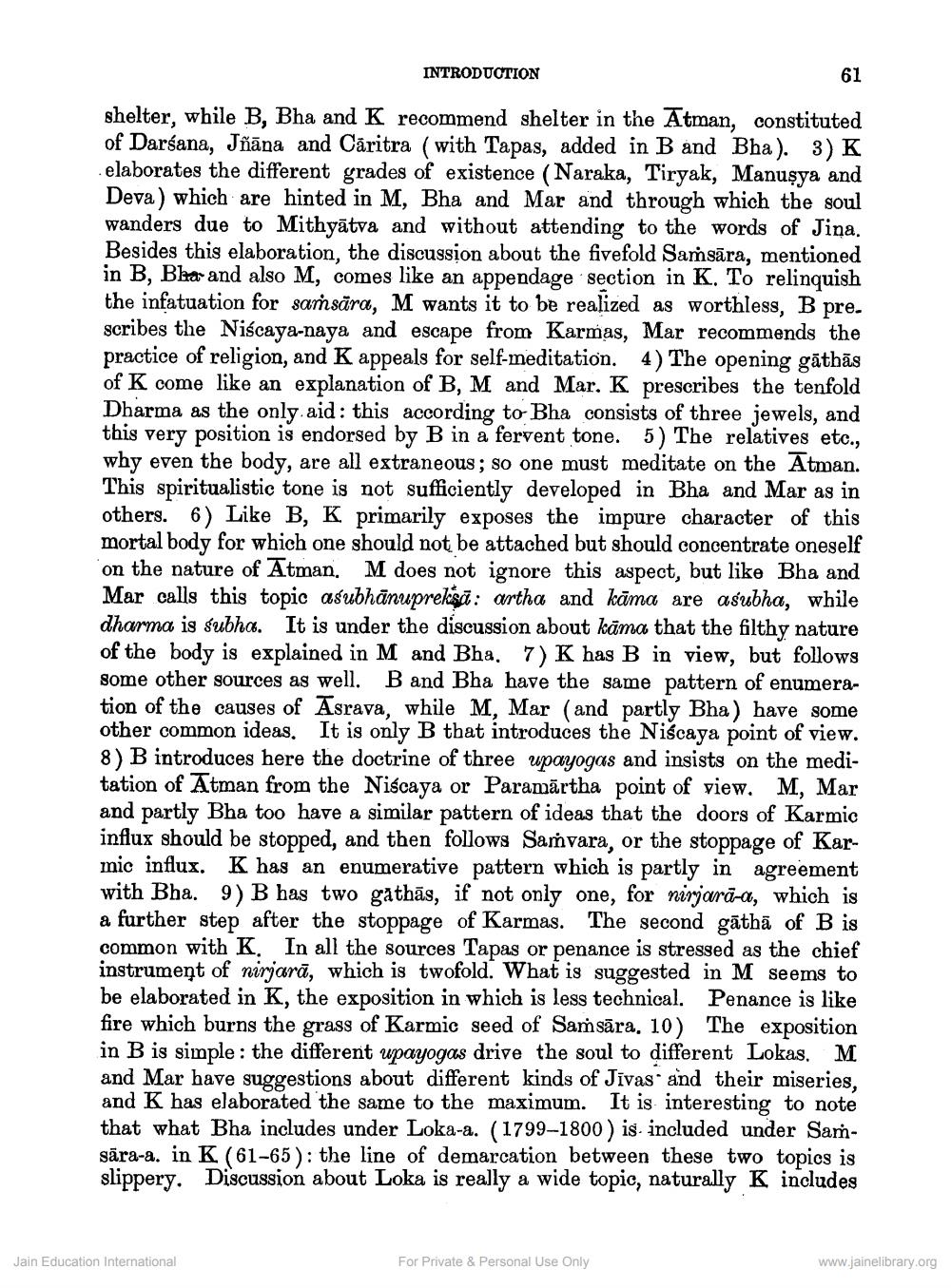________________
INTRODUCTION
Jain Education International
shelter, while B, Bha and K recommend shelter in the Atman, constituted of Darśana, Jñana and Caritra (with Tapas, added in B and Bha). 3) K elaborates the different grades of existence (Naraka, Tiryak, Manusya and Deva) which are hinted in M, Bha and Mar and through which the soul wanders due to Mithyatva and without attending to the words of Jina. Besides this elaboration, the discussion about the fivefold Samsara, mentioned in B, Bha and also M, comes like an appendage section in K. To relinquish the infatuation for samsara, M wants it to be realized as worthless, B pre. scribes the Niścaya-naya and escape from Karmas, Mar recommends the practice of religion, and K appeals for self-meditation. 4) The opening gāthās of K come like an explanation of B, M and Mar. K prescribes the tenfold Dharma as the only aid: this according to Bha consists of three jewels, and this very position is endorsed by B in a fervent tone. 5) The relatives etc., why even the body, are all extraneous; so one must meditate on the Atman. This spiritualistic tone is not sufficiently developed in Bha and Mar as in others. 6) Like B, K primarily exposes the impure character of this mortal body for which one should not be attached but should concentrate oneself on the nature of Atman. M does not ignore this aspect, but like Bha and Mar calls this topic asubhanupreksa: artha and kāma are asubha, while dharma is subha. It is under the discussion about kama that the filthy nature of the body is explained in M and Bha. 7) K has B in view, but follows some other sources as well. B and Bha have the same pattern of enumeration of the causes of Asrava, while M, Mar (and partly Bha) have some other common ideas. It is only B that introduces the Niścaya point of view. 8) B introduces here the doctrine of three upayogas and insists on the meditation of Atman from the Niścaya or Paramartha point of view. M, Mar and partly Bha too have a similar pattern of ideas that the doors of Karmic influx should be stopped, and then follows Samvara, or the stoppage of Karmic influx. K has an enumerative pattern which is partly in agreement with Bha. 9) B has two gathās, if not only one, for nirjara-a, which is a further step after the stoppage of Karmas. The second gatha of B is common with K. In all the sources Tapas or penance is stressed as the chief instrument of nirjara, which is twofold. What is suggested in M seems to be elaborated in K, the exposition in which is less technical. Penance is like fire which burns the grass of Karmic seed of Samsara. 10) The exposition in B is simple: the different upayogas drive the soul to different Lokas. M and Mar have suggestions about different kinds of Jivas and their miseries, and K has elaborated the same to the maximum. It is interesting to note that what Bha includes under Loka-a. (1799-1800) is included under Samsara-a. in K (61-65): the line of demarcation between these two topics is slippery. Discussion about Loka is really a wide topic, naturally K includes
61
For Private & Personal Use Only
www.jainelibrary.org




